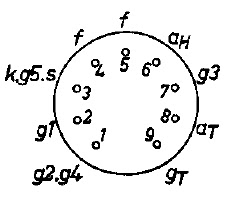
Good news - where before I could copy CW on headphones, now I could copy voice in speakers! That's real progress, I guess - but there are limits to how many aviation meteorology reports or Radio Taiwan shows a boy can stomach.
However, I still had a much higher loss to contend with than the writings of other enthusiasts suggest I should expect (I have no "real" IFT to compare against). So, I spent some time chasing down the origins of this disappointing performance. My (interim) conclusion inspired the title of this blog; "there's more to this than meets the eye".
A little reading around the web led me to invest some time in reading more of Max K4ODS's website "Fun with Tubes", amongst which is an interesting idea for IFTs made with axial chokes . The thing that rang the bell with me was the fact that I'd already messed with axial chokes along the way to building the present IFTs, as described here .
I quickly made up an IFT using the "chassis" of one of my original devices, replacing the coils wound on sewing machine bobbins with 1mH axial chokes, as you can see here...

I had already been amazed when playing with the IFTs with the very low levels of coupling between the coils required to get the characteristic "critical" response. The (relatively) small coupling between the two coils in the photo above is about right for critical coupling - amazing!
I built the "axial" IFT more with a mind for experimentation than use and - in playing around with it - I stumbled on another key realisation (for me at least) ... there is CAPACITIVE coupling between the primary and secondary circuits of my IFTs which is almost as significant as the (intended) inductive coupling. This prompted a lot more messing with Spice models but - rather more practically - I decided it was time to re-visit an idea I toyed with on an earlier blog - I would build a Wobbulator.
Don't know what a Wobbulator is? Wikipedia does !
Here's a pic of the quickly knocked together m0xpd Wobbulator

The ugly board (left) includes both the voltage-controlled oscillator and a first try at the sawtooth "timebase" circuit. The circuit on Veroboard is an improved timebase circuit.
Here's the first result from the Wobbulator...

I don't yet know what the peak at the left (low frequency) end of the trace is - I haven't had a chance to get used to it / de-bug. However, you can see the near-critical response of the IFT made of axial chokes (seen earlier in this blog).
Now, armed with a wobbulator, I hope to be able to conduct some more orderly "experiments" with my H/B IFTs and with the Superhet project as a whole. Watch this space!
...-.- de m0xpd








